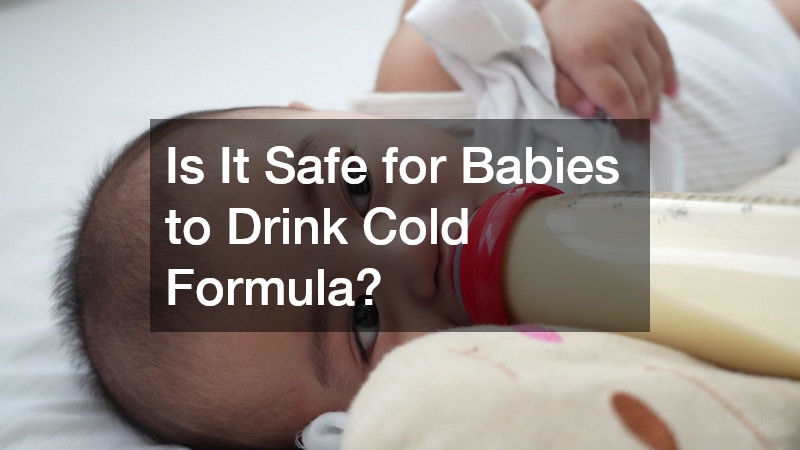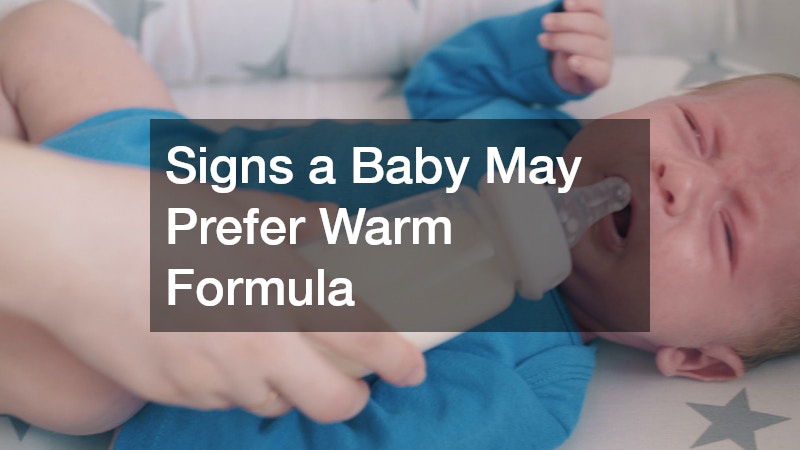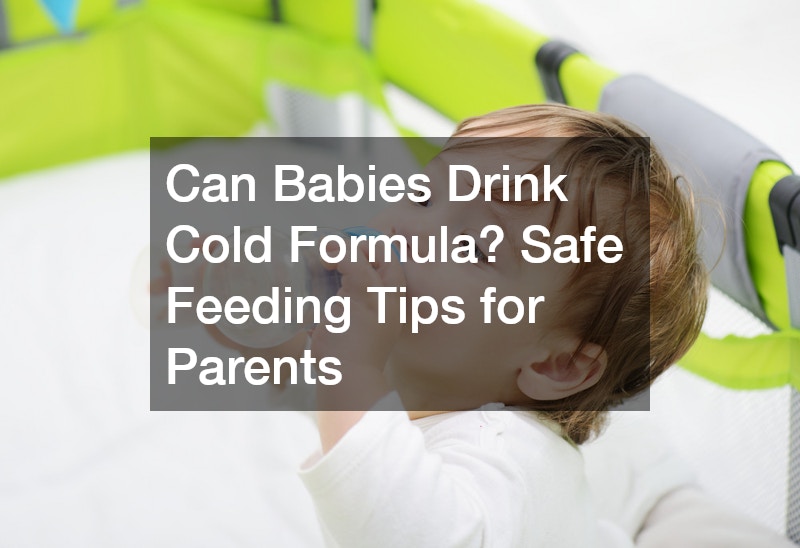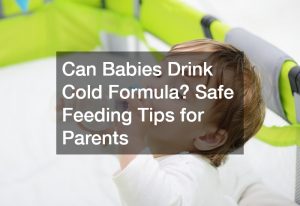Feeding your baby safely is a top priority for any parent, and many wonder whether it’s safe to give babies cold formula. While some parents prefer warming bottles, cold formula is sometimes convenient, especially for nighttime feedings, travel, or on-the-go situations. Understanding the safety, nutritional considerations, and practical tips for feeding cold formula helps ensure your baby stays healthy and comfortable.
This article explores the pros and cons of cold formula, proper handling, preparation methods, storage tips, and guidelines for safe feeding practices.
Is It Safe for Babies to Drink Cold Formula?

Yes, babies can drink cold formula in most cases. Formula at cooler temperatures does not lose nutritional value, and many babies will happily drink it. However, there are some considerations to keep in mind:
- Baby Comfort: Some babies prefer formula at body temperature, which can feel similar to breast milk. Cold formula may be less appealing to them.
- Digestive Comfort: Cold formula can occasionally cause mild stomach discomfort or gas in some infants, especially sensitive newborns.
- Hydration: Temperature does not affect hydration, but always ensure formula is safe and properly prepared.
Tip: If your baby refuses cold formula, try warming it slightly or gradually adjusting the temperature to their preference.
Pros and Cons of Cold Formula
Pros:
- Convenient: Ideal for nighttime feedings or when traveling.
- Time-Saving: Eliminates the need to warm bottles before feeding.
- Maintains Nutrients: Cold temperature does not degrade essential vitamins and minerals in formula.
Cons:
- Acceptance Issues: Some babies may reject cold formula due to taste or temperature preference.
- Potential Discomfort: Cold formula can sometimes cause mild stomach upset or gas.
- Feeding Speed: Babies may feed more slowly if the formula is colder than preferred.
Tips for Feeding Cold Formula
Feeding cold formula safely involves proper preparation, storage, and hygiene practices. Follow these steps to minimize risk:
- Use Proper Storage: Refrigerate prepared formula promptly and use within 24 hours. Avoid leaving formula at room temperature for extended periods—understanding how long can a formula bottle sit out helps prevent bacterial growth.
- Clean Equipment: Always wash hands and sterilize bottles, nipples, and caps before use.
- Serve in Small Amounts: Pour only what your baby will consume to prevent leftover waste.
- Check the Bottle: Inspect formula for unusual odor, clumping, or color changes. Discard if any signs of spoilage appear.
- Warm Gradually if Needed: If your baby resists cold formula, place the bottle in a bowl of warm water or use a bottle warmer to slightly raise the temperature.
Preparing Cold Formula Safely
Whether using powdered, liquid concentrate, or ready-to-feed formula, safety is essential.
- Powdered Formula: Mix with clean, safe water and refrigerate immediately if not used. Powdered formula is not sterile until prepared, so prompt handling is crucial.
- Liquid Concentrate: Dilute according to manufacturer instructions, then refrigerate any unused portions.
- Ready-to-Feed Formula: Already sterile, but once opened, refrigerate and use within 24 hours.
Additional Tips:
- Avoid microwaving formula to warm it, as uneven heating can create hot spots.
- Label bottles with preparation time to avoid feeding formula that has been sitting out too long.
- Always shake the bottle gently to mix ingredients before feeding.
Traveling or On-the-Go Feeding
Cold formula is especially convenient for parents on the go. Follow these strategies to ensure safety and ease:
- Insulated Bags: Keep bottles in insulated cooler bags with ice packs. Use within 2–4 hours for best safety.
- Pre-Measured Powder Packets: Mix formula just before feeding for freshness.
- Check Temperature Preference: Some babies may prefer slightly warmed formula even while traveling.
- Plan Ahead: Bring extra bottles and a clean container for used bottles to maintain hygiene.
Tip: Never leave formula in a hot car or direct sunlight, as this can cause rapid bacterial growth.
Benefits of Warming vs. Cold Formula
While cold formula is safe, some parents wonder whether warming formula is better.
Warming Benefits:
- Mimics body temperature similar to breast milk.
- May soothe babies who prefer a warmer feed.
- Can encourage faster feeding for newborns or picky eaters.
Cold Formula Benefits:
- Convenient and quick.
- Nutritional content remains intact.
- Reduces risk of burns from overheated bottles.
Ultimately, the choice between cold and warmed formula depends on your baby’s preference and your lifestyle. Some babies happily drink cold formula, while others may need it slightly warmed.
Signs a Baby May Prefer Warm Formula

Not all babies react the same way to cold formula. Look for these cues:
- Refusing the bottle or spitting out formula.
- Slower feeding or fussiness during the feed.
- Turning away from the nipple or making gagging motions.
If your baby consistently rejects cold formula, try warming it slightly and see if acceptance improves. Some babies gradually adjust and can transition to cold formula over time.
FAQs About Cold Formula
Can cold formula upset a baby’s stomach?
Most babies tolerate cold formula well, but sensitive infants may experience mild gas or discomfort.
How long can cold formula sit out?
Prepared formula can sit at room temperature for up to 2 hours. After feeding begins, discard any leftovers within 1 hour.
Is it safe to mix formula in advance and refrigerate?
Yes. Prepared formula can be refrigerated for up to 24 hours if stored in a clean, sealed bottle.
Can preterm or newborn babies have cold formula?
For very young or preterm infants, slightly warmed formula is often preferred to reduce fussiness and aid feeding. Always consult your pediatrician.
Can cold formula be fed at night?
Yes, cold formula is safe and convenient for nighttime feeds. Some babies may drink it directly from the fridge, while others may prefer a slightly warmed bottle.
Conclusion
Babies can safely drink cold formula, provided it is prepared, stored, and handled correctly. Cold formula maintains its nutritional value and can be a convenient option for travel, nighttime feeding, or on-the-go parents.
Always ensure bottles are clean, prepared safely, and refrigerated if not used immediately. Follow guidelines for safe room temperature storage and discard any formula left out too long. Observing your baby’s preferences and cues will help determine whether cold or slightly warmed formula works best for your little one.
By following these best practices, parents can confidently feed cold formula while keeping their baby healthy, comfortable, and properly nourished.



















